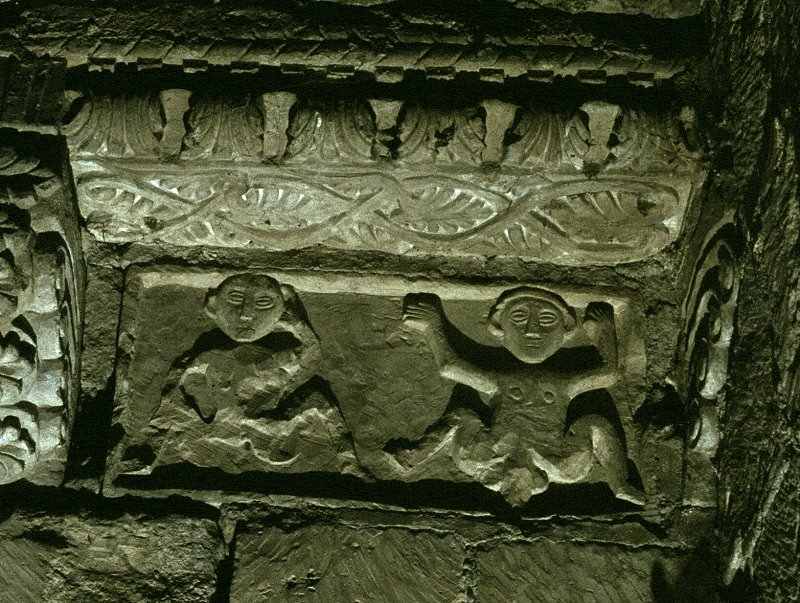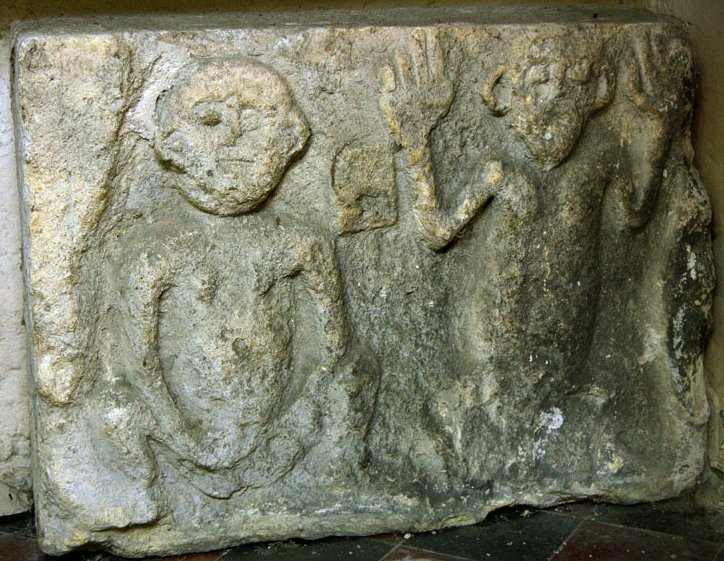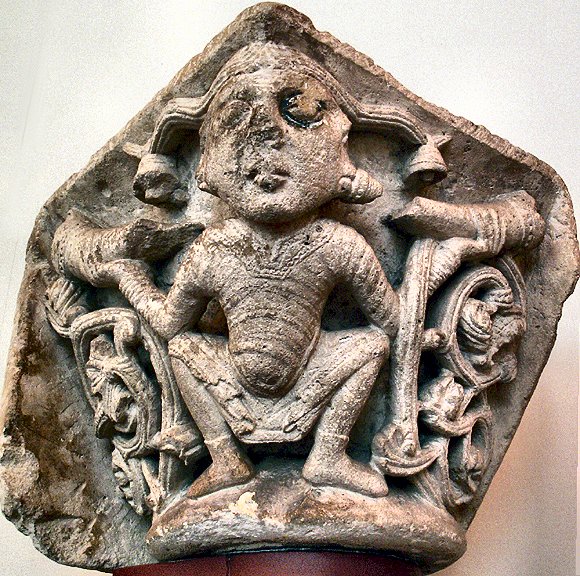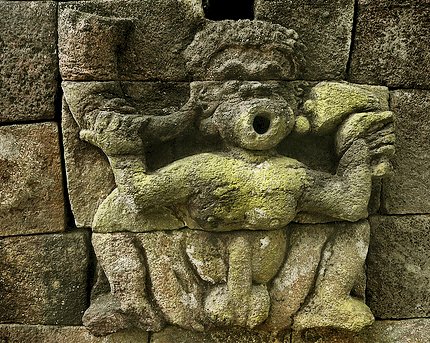Poitiers (Vienne)
The church of Saint-Hilaire-le-Grand (St Hilary) is the earliest of six Romanesque
churches in Poitiers
and this very damaged panel in the bell-tower dates from not long after the
year 1000.
The female (on the left) has her hands in a position typical of insular, post-Romanesque
'sheela-na-gigs':
one touching or indicating her head, the other indicating or pulling her vulva.
The serious damage does not allow us to say which.
The male has both arms raised, and both figures are in the legs-splayed squatting
position,
which is evidently also significant.
This the earliest pair of Romanesque exhibitionists, on a panel (of a
frieze) between narrow, almost Mozarabic bracket-
corbels.
One can see how obvious it was to move instructional figures like this to
corbels - if only to save money!

Click to see a remarkable contemporaneous capital in the same church. >
Compare with another early pair on a corbel in York Minster >
Compare with a remarkable Welsh cross-slab >
Compare the above carving with the pair carved over 100 years later
on the base of a column at Loctudy (Finistère) an extremely
remote church.
Note that the woman indicates her hair with both hands, while her legs are
in a position
resembling that of many 'sheela-na-gigs'. The male's legs are in the other
classic
'sheela-na-gig' position.

And compare both the above with a slab depicting an effaced pair
and now sitting in the vestry of the parish church at Moulton in Suffolk.

The position of the hands is obviously of great importance in each of these scenes.
How different all the above panels are from the sophisticated and richly-robed
pair of figures on voussoirs above the doorway
of the church at Sévignacq-Thèze
(Pyrénées-Atlantiques)...>
Capital from the cathedral of Saint-Etienne in Toulouse:
a jongleresse with bells hanging from her tresses, and two horns originally
attached to her jaws!


This remarkable carving is on a 15th century Hindu temple at Candi
Sukuh on the island of Java, Indonesia.
The only purely Hindu element on it is the hair.
How did the Romanesque squatting exhibitionist (sometimes with the horn
motif added)
reach the East Indies ?
